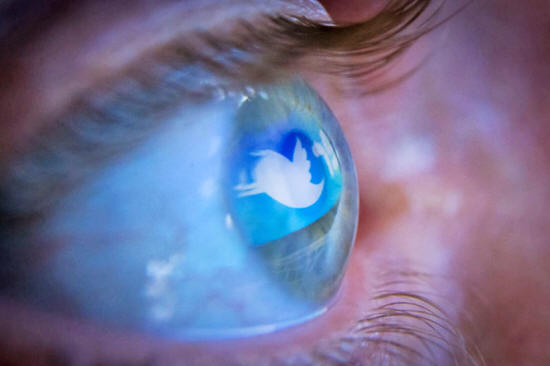|

by Philip Ball
08 March
2018
from
Nature Website

twitter
NurPhoto/Getty
A study of information
sharing on Twitter
shows people more likely
to re-tweet falsehoods.
Fake news spreads faster and more widely than true news, according
to a study examining how 126,000 news items circulated among 3
million Twitter users.
"This is the most
comprehensive descriptive account of true and false information
spreading on social media that we have to date", says Dean
Eckles, a social scientist at the Massachusetts Institute of
Technology in Cambridge (MIT) who was not involved in the
work.1
Untrue 'news' is as old
as gossip, but its proliferation has become particularly troubling
in the era of social media.
False stories amplified
on Facebook and Twitter, such as
the claim that Pope Francis endorsed Donald Trump's candidacy for
the US presidency, have been implicated in tilting election
outcomes.
The role of false stories in Donald Trump's surprise 2016 election
victory or the
UK's Brexit vote, for example, is
subject to intense debate.
Part of the answer hinges
on understanding how fake news travels, say Sinan Aral and
his team at MIT, whose study (The
Spread of True and False News Online) was published in
Science on 08 March (2018).
They classified news spread on Twitter as "true" or "false",
according to cross-checks using information from six established
fact-checking sources. In this way, they investigated the
dissemination of 126,000 news items among 3 million Twitter users
between 2006 and 2017, using data supplied by the company.
Their analysis showed that news stories deemed to be true, with
95-98% agreement among fact-checkers, spread more slowly than false
stories, and reached fewer people.
Even the most popular true news stories rarely reached more than
1,000 people, whereas the top 1% of false news stories reached
between 1,000 and 100,000 people.
False news that reached
1,500 people did so six times faster than did true stories. And
falsities were 70% more likely to be re-tweeted than truths,
according to a model of the data.
Aral's team used software to spot automated 'bot'
accounts on Twitter, which have been suspected of distorting the way
in which news travels.
But even with those data
removed, fake news generated by people rather than bots still spread
faster than truth, showing that this property stems from human
behavior.
To understand why, the researchers quantified the "novelty" of
tweets and found that false news items stood out among a random
corpus of tweets.
An analysis of the words
in the tweets suggested that false news instilled fear,
disgust and surprise, whereas true news was more likely
to arouse feelings including sadness, joy and trust.
These features, especially the greater "novelty", might be expected
to draw more attention to false news, the researchers say.
Could the study's findings mean that there is a 'fake news' formula,
just waiting to be exploited? Unlikely, says Duncan Watts, a
specialist in social networks at Microsoft Research in New York.
Earlier work has
suggested that it is hard to link a particular story's penetration
to its content,2 and Watts thinks it would be difficult
to predict how specific stories will spread.
The shallower apparent reach of true news could also be due to users
sharing a link to a primary source, rather than a mere re-tweet, he
says. If so, true news would spread through smaller cascades,
whereas 'fake news' gushes forth like a waterfall.
Watts does not dispute that fake news is a problem, but he says it
must be taken with a grain of salt.
Other studies confirm
that most people, whether moderates or partisans, overwhelmingly
consume legitimate news from mainstream sources, he says.
"I think that
panicking about fake news on Twitter is the wrong reaction."
References
1. Vosoughi, S., Roy,
D. & Aral, S. Science 359, 1146-1151 (2018) -
The Spread of True and False News Online
2. Martin, T., Hofman, T., Sharma, J. M, Anderson, A. & Watts,
D. J. Proc - 25th Int. Conf. on World Wide Web, 683–694
(International World Wide Web Conference Committee, 2016).
|


